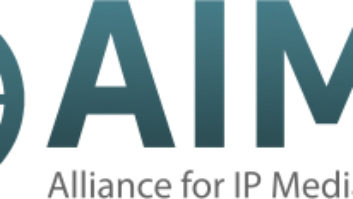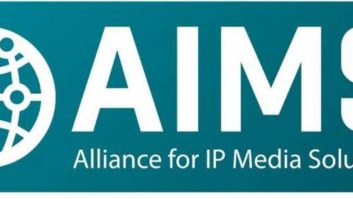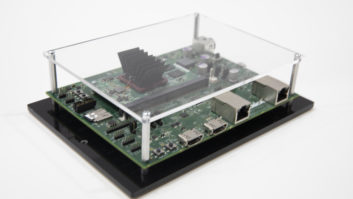A few weeks before his untimely death on July 26, David Chiappini, executive vice president, research and development at Matrox, delivered what would turn out to be his last commentary piece for Installation, on the future of AVoIP. We’re running it here out of respect for David. He will be sorely missed, and would have made the cut for our Pro AV Watch List (see page 25) had he lived. Our thoughts and deepest sympathies go out to David’s family and friends at this difficult time.
 The first PCs that hit the market were based on proprietary parts and a closed loop of supply. Only when true standards were introduced into the PC space that competition accelerated innovation, and energy was placed on adding value rather than reinventing the foundation.
The first PCs that hit the market were based on proprietary parts and a closed loop of supply. Only when true standards were introduced into the PC space that competition accelerated innovation, and energy was placed on adding value rather than reinventing the foundation.
There is no doubt that open standards drive markets to achieve their full potential, and this same approach can be applied to AV over IP.
OPEN STANDARDS
AVoIP is a crowded space filled with proprietary solutions. Some of those solutions are masquerading as standards but are just closed proprietary solutions
at their core: locking in customers, suppressing free innovation, and preventing best-of-breed development.
Internet Protocol for Media Experience (IPMX) is the only open standards and specifications-based approach to AV over IP for the Pro AV industry. The IPMX initiative originated at the AIMS Alliance and is based on the SMPTE ST 2110 and AMWA NMOS suites of standards. These standards were driven by the need for the IP transition in the broadcast industry, so it was logical to leverage that effort to solve similar problems in pro AV.
However, similar problems are not the same problems. SMPTE ST 2110 and NMOS are a great foundation, battle-hardened and put through the testing grinder. Pro AV markets look at things differently than broadcast markets do, and so there were some adjustments needed to achieve the experience that has been promised.
What SMPTE and AMWA did well was clearly specify the target behaviours and test them with large groups of manufacturers, installers, and end customers. They brought in broad support from organizations like AIMS, AMWA, VSF, SMPTE, and JT-NM. They added plugfests to help promote interoperability and certification testing to help guarantee the operational quality of product claiming to support the standard. They generated vast amounts of educational material, ran years of shows and seminars, and continue to do so today. Along with a few others, this same group has jumped in to support getting IPMX out the door in the same way.
EVOLVING SUPPORT
IPMX delivers a wide range of ever-evolving features and benefits. These include the NMOS software control interface that is available on GitHUB; multi-rate network support providing 1 GbE to 100 GbE support and beyond; sub-millisecond latency; multi-AV I/O interfaces like HDMI, DisplayPort, and even HDbaseT; support for compressed and uncompressed interfaces; an updated security and encryption solution; protected content support with an official HDCP addendum; optional full redundancy and error correction modes; HDR/SDR, EDID, and HDR support.
To live up to its name, the AIMS Alliance worked on streamlining timing aspects and requirements to lower the complexity and help keep deployment costs down. Recently, AMWA has added support for IS-11, which will enable EDID functionality. The HDCP specifications now detail how to transport HDCP content over the RTP protocol used by IPMX. A new technical recommendation is nearly complete to enable IPMX to support operation with asynchronous media sources like computers without requiring PTP. This will ensure IPMX enables low-cost network infrastructure typical of a sizeable segment of Pro AV deployments.
And it won’t stop there. Groups are working on expanding the suite of standards in many different aspects like adding high compression support to increase reach and adding proper WAN/internet transmission.
PROMISING FUTURE
Many things have stalled in the last year because of the Covid-19 pandemic, but not on the IPMX front. Engineering and product manager-types have been toiling away to help build the IPMX standard – and the results are showing! IPMX is generating a lot of interest from the pro AV market that recognises the benefits of deploying open standards-based solutions and from the broadcast market, seeing this as a complementary solution space for some of the simpler tasks and smaller facilities.
There is still work to be done in the coming months to enable IPMX to become the open standard that the professional AV market needs, but the momentum is clear: people are excited by the promises that only true open standards can deliver.







